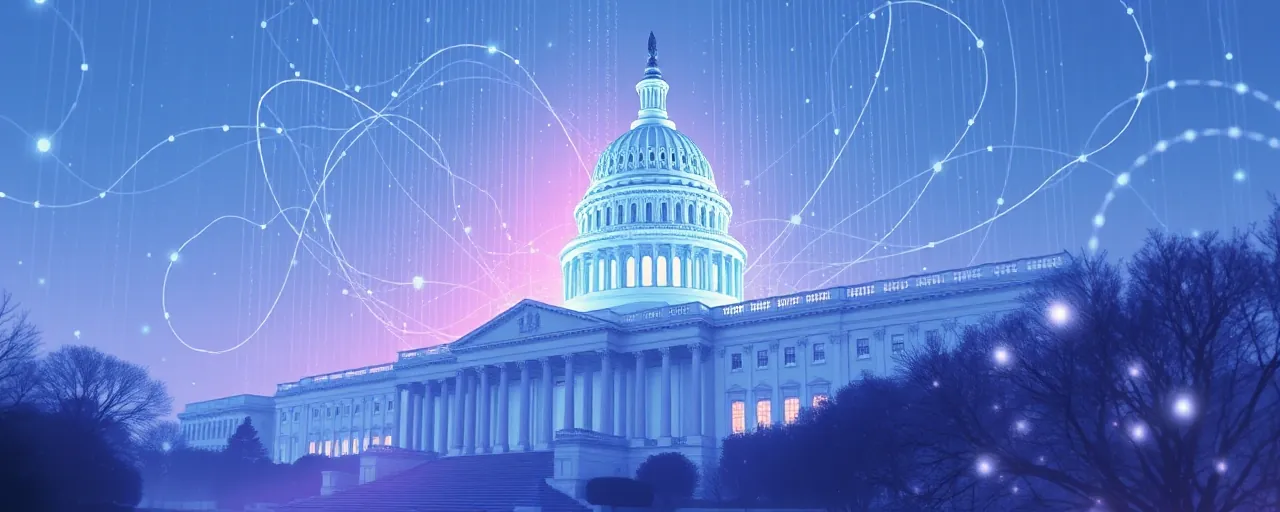A Bold Step Forward
The U.S. government is diving headfirst into the artificial intelligence era. On April 7, 2025, the White House Office of Management and Budget released two updated policies aimed at transforming how federal agencies use and acquire AI. These changes, driven by a recent Executive Order, seek to harness American innovation to streamline operations and reinforce the nation’s standing in a fiercely competitive global tech landscape. It’s a move that promises to reshape everything from airport security to patent processing, all while keeping an eye on the real-world impacts that matter to everyday people.
This isn’t just about gadgets or geek speak. The push reflects a broader recognition that AI is no longer a futuristic fantasy; it’s a tool already reshaping how governments work and compete. With the U.S. locked in a high-stakes rivalry with nations like China, these policies signal an intent to lead, not follow. Yet, beneath the ambition lies a tangle of practical questions: How will this affect taxpayers? Can efficiency coexist with fairness? The answers are starting to take shape, and they’re worth watching closely.
Efficiency Meets Innovation
At the heart of the new policies is a drive to make government leaner and smarter. Agencies are being encouraged to adopt AI for tasks like sifting through bids, spotting fraud, or cutting through red tape. Take the Transportation Security Administration, for instance; it’s already testing AI to sharpen airport security checks. The U.S. Patent Office, meanwhile, uses it to slash the time it takes to review applications. Advocates within the administration argue this could save billions by trimming labor hours, a claim backed by studies projecting up to 30% reductions in operational costs over the next few years.
The procurement side is just as critical. By prioritizing American-made AI solutions, the policies aim to fuel a competitive domestic market. Last year alone, federal agencies spent over $100 billion on IT, a chunk of which now flows toward AI developers. This isn’t small change; it’s a lifeline for U.S. firms racing against global rivals. Still, some analysts point out a hitch: high training costs and a workforce needing serious reskilling - about 40% of federal employees, by one estimate - could slow the rollout. The gamble is that smarter tech will outweigh the upfront pain.
The Global Stakes
Zoom out, and the picture gets bigger. The U.S. is flexing its muscle in a global AI showdown. In 2024, American innovators churned out 40 notable AI models, dwarfing China’s 15. Private investment here hit $109.1 billion, nearly twelve times China’s haul. Yet, the gap is shrinking. China’s churning out more AI patents and papers, optimizing cheaper chips to keep pace. The White House sees these policies as a way to cement America’s edge, leaning on trade deals like the USMCA to boost digital innovation while keeping rivals at bay.
It’s not all smooth sailing. Taiwan’s grip on the semiconductor supply chain, vital for AI hardware, exposes vulnerabilities. If tensions with China flare, the U.S. could find itself scrambling. Supporters of the administration’s approach say deregulation will spark the breakthroughs needed to stay ahead. Others, including some tech experts, warn that easing oversight might trade short-term wins for long-term risks, especially if competitors catch up in raw ingenuity.
Balancing Act: Rights and Risks
Here’s where it gets messy. AI’s power to transform comes with baggage. Privacy advocates are sounding alarms as government systems hoover up data for surveillance or decision-making. State laws in places like Delaware and New Jersey are stepping up with tougher consumer protections, but there’s no federal playbook yet. Critics argue that without it, bias in AI tools - think flawed hiring algorithms or skewed judicial outcomes - could deepen mistrust. Litigation over privacy breaches is already spiking, driven by citizens demanding accountability.
The White House insists it’s on the case, weaving safeguards into the new policies to protect civil rights and liberties. The Executive Order mandates action plans from agencies within six months, a nod to keeping things transparent. Still, some civil society groups say it’s too vague, lacking the teeth to tackle systemic issues. The tension is clear: turbocharge innovation, but don’t trample the values people hold dear. Striking that balance might be the toughest test yet.
What’s Next for America’s AI Bet
These policies mark a pivot, building on a decade of fits and starts in federal AI adoption. Past efforts, like Biden’s 2023 order, leaned hard into equity and oversight. Today’s approach swings toward unleashing innovation, trimming what some call bureaucratic fat. It’s a calculated risk: turbocharge the tech, save money, win globally. Early signs - think faster contract reviews on SAM.gov or sharper security scans - suggest it could pay off. But the jury’s still out on whether the savings and swagger will hold up under scrutiny.
For the average person, this isn’t abstract. It’s about a government that works better, costs less, and keeps the U.S. in the driver’s seat. Yet, it’s also about trust - knowing your data’s safe and the system’s fair. As agencies roll out these plans, the real story will be in the details: who wins, who loses, and whether America’s AI gamble delivers. One thing’s certain: the world’s watching, and the clock’s ticking.
